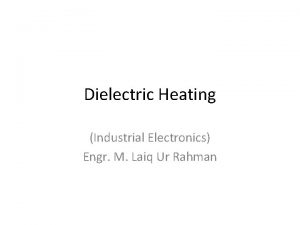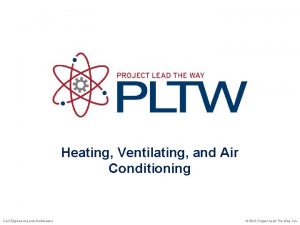Using Heat Section 6 3 Heating Systems Heating





- Slides: 5

Using Heat Section 6. 3

Heating Systems § Heating systems – used to warm homes § Forced-air systems- fuel heat air, which is blown through ducts and vents; cool air is returned to the furnace to be reheated § Radiator system- hot water or steam in a radiator transfers thermal energy to the air § Electric heating system- electrically heated coils in ceilings or floors heat air by conduction

Solar Energy § Solar energy – energy from the sun § Passive solar heating does not use mechanical devices to move heat- large windows are used instead to let the sun in. – Walls are heavily insulated. – Only the south wall has windows. § Active solar heating systems use solar collectors to absorb radiant energy – Water or air in the solar collector is heated and then circulated throughout the building

Heat engines § Heat engine- an engine that converts thermal energy into mechanical energy § An internal combustion engine burns fuel inside the engine in chambers or cylinders – Covert only about 26% of chemical energy in fuel to mechanical energy § Heat mover- device that removes thermal energy from one location and transfers it to another location at a different temperature – Refrigerator, air conditioner

Heat Movers § Refrigerator- contains a coolant that absorbs heat from the inside of the refrigerator and releases it on the outside as heat § Air conditioner- cools warm air § Heat pump – can cool or warm air § The human body stays cool by evaporation of sweat









